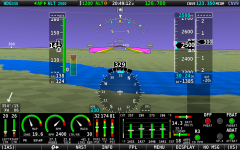We're going down to 7 degrees f tonight. I don't know if my RV-8 canopy has ever seen that low of a temp. (Built in Texas, lived in Oklahoma and now SC). I'm thinking of putting an incandescent work light in a steel milk bucket in the backseat after taking the seat cushions out. Next, I'll place a blanket over the canopy. What do you think? Trying to just give it a little warmth. Good idea or bad idea.
I just don't want to come out next week to find a big crack!
I just don't want to come out next week to find a big crack!





